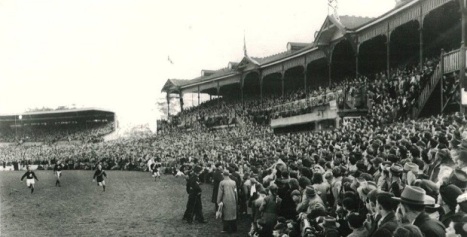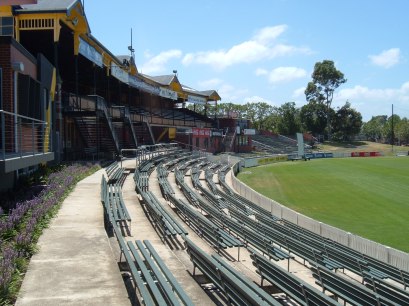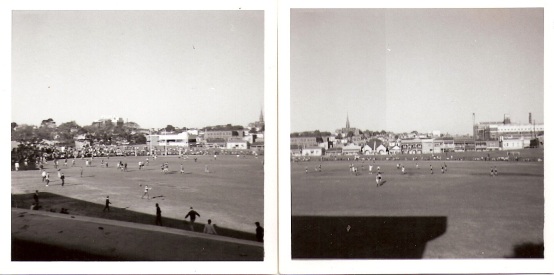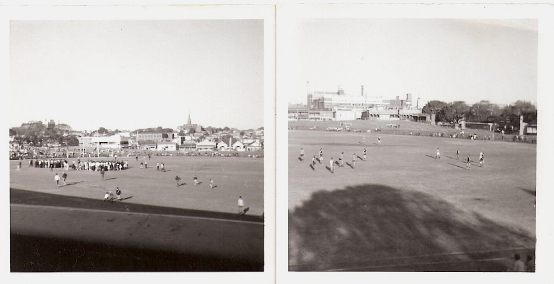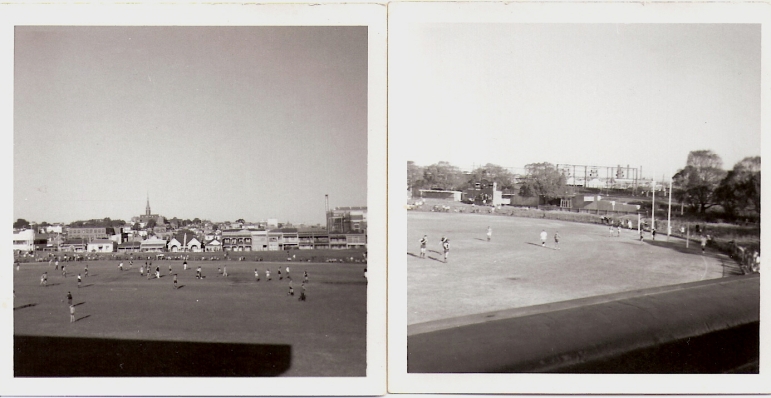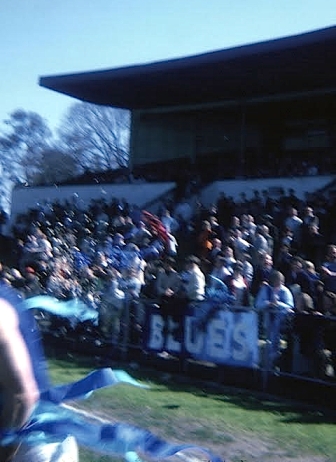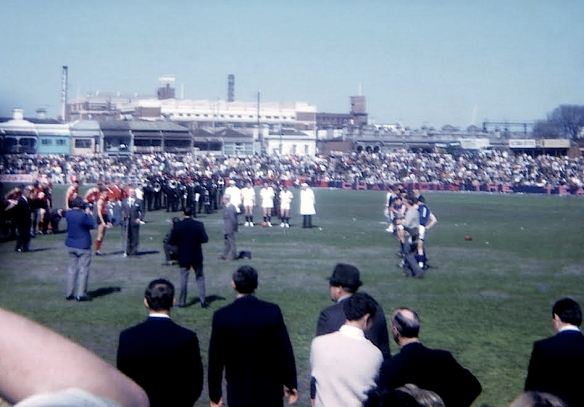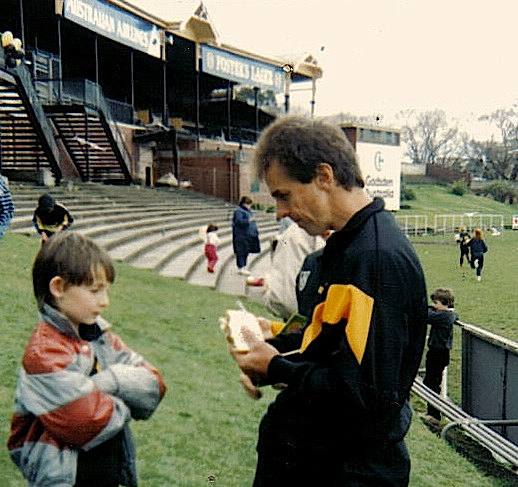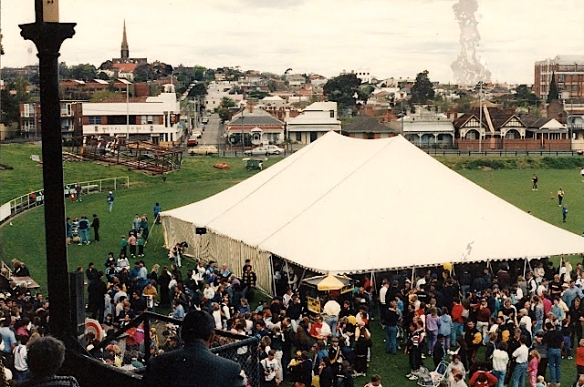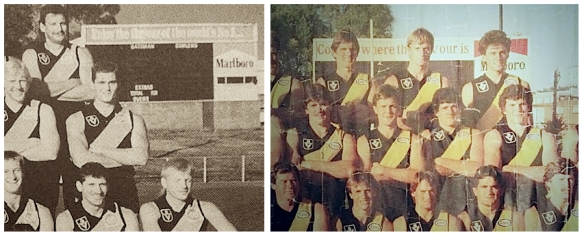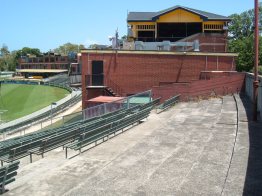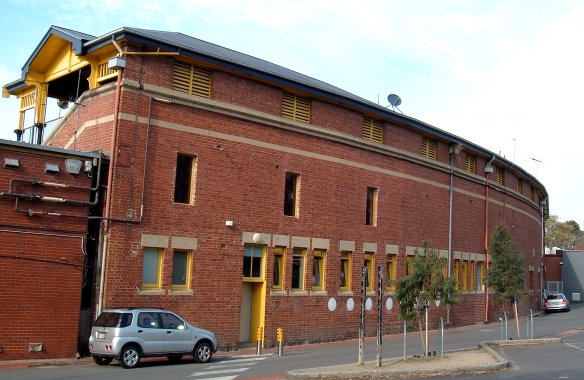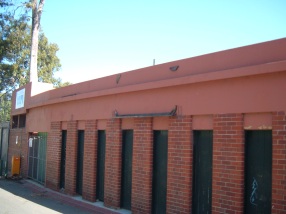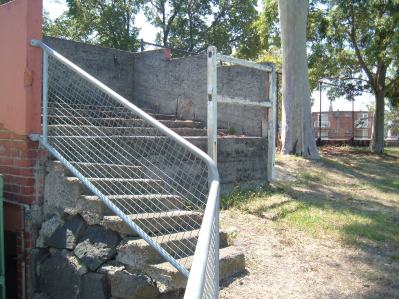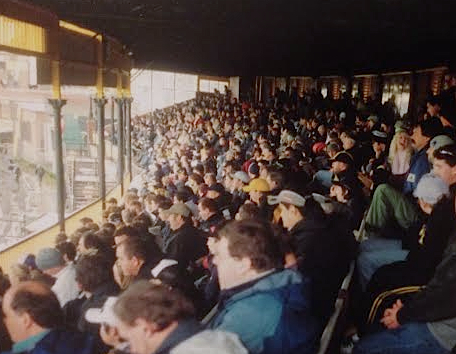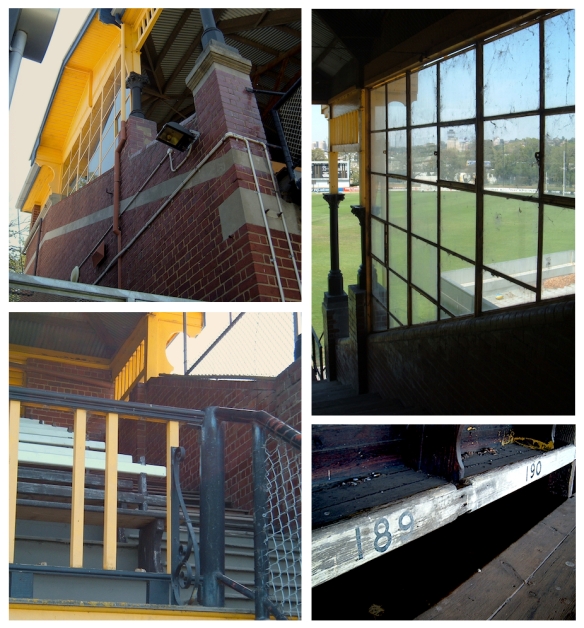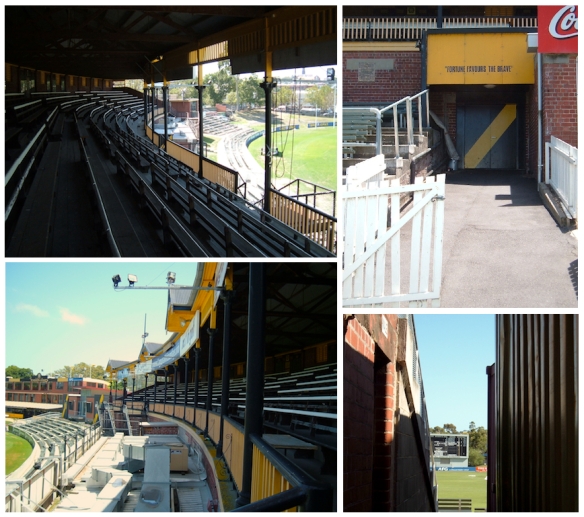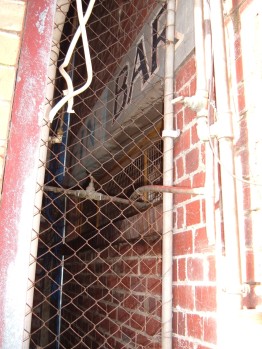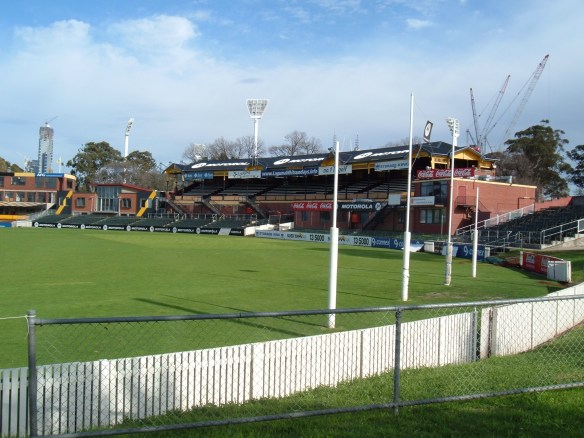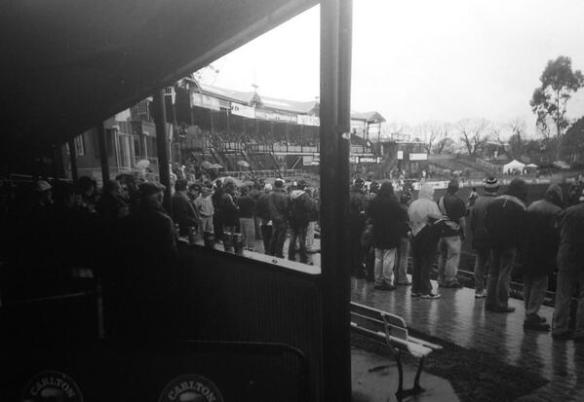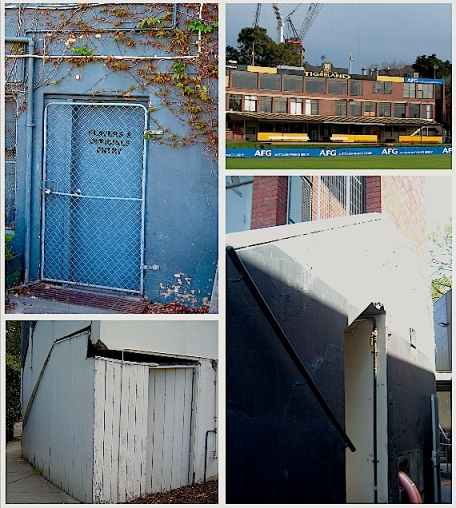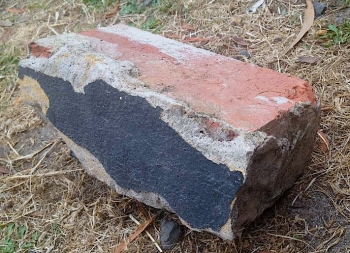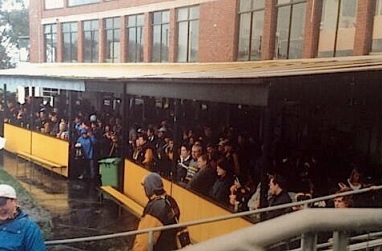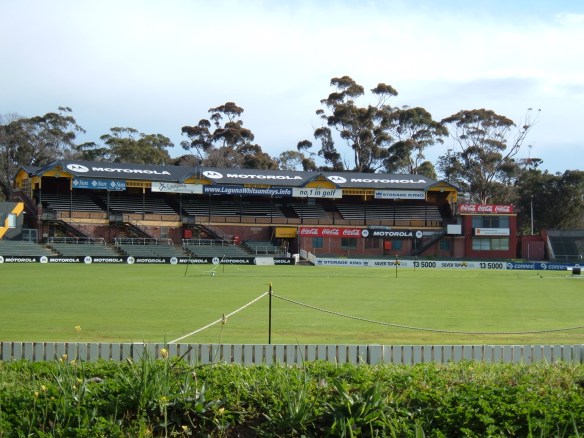I first posted this in 2011 on Nick Maxwell’s blog, and secondly (with additions) on the footy almanac site. Here is my third posting, with further updates! You’ll just have to remember it was written in the context on football 2011. i’m posting this one last time as i’m off to punt road with my daughter molly to watch Port melbourne v richmond, as my family did back in the early 1900’s. Read on.
In case it escaped your attention last year, esteemed journalist Patrick Smith took the astonishing step of turning his back on four generations of Essendon-supporting tradition, trading the Bombers in for my club Richmond! Smith’s actions were in protest of his ‘former club’s’ handling of the controversial James Hird and Mark Thompson coaching appointments, using what he described as “shabby trickery unworthy of a league that aspires to be the best and most respected competition in the country.”
“It has become impossible to continue to support a club that acted so shamelessly.”
Whether a mere publicity stunt or pure stubbornness, it just didn’t sit comfortably with me. Firstly- what exactly did Essendon do wrong? I don’t particularly love the way in which they conducted themselves post-season 2010, but I’d love that ruthless nature should Richmond adopt it. I also get the sense that the majority of Essendonians are supportive, given the sudden spike we saw in 2011 membership sales.
Secondly- what will Patrick do when Richmond one day acts in a way he can’t respect? Surely it’s only a matter of time. Will he switch clubs again?
And thirdly- how can you turn your back on such a family institution and tradition? How can you push down that instinctive ‘urge’ for your team? I haven’t found the off switch yet! Perhaps decades of sports journalism is the answer?
I was reminded of these ‘antics’ as I read through the memoirs Fr Kevin Cronin, my first cousin, twice removed, or more simply, my grandmother’s cousin. Kevin passed away in 2007. His stories added to what I already knew of my family’s links with Richmond, both football club and suburb, yet from a different perspective. The Cronins were of Irish heritage as was much of Richmond’s population, and have been traced back by family members as far as my great great great grandfather, Patrick Cronin, who emigrated from County Cork in Ireland to Richmond in th1840s, during the period of the great potato famine.
The first thing that leapt from the pages as I read Kevin’s memoirs was simply a paragraph on his father, Thomas Cronin, brother of my great grandfather, Maurice.
“Dad was a Tiger supporter even as a boy and a young man. In those days, the Tigers were part of the Football Association. Whenever the team played an away match against Port Melbourne, the Tiger supporters would travel together by train, then form up in military fashion and march to the ground, a matter perhaps of intimidate or be intimidated! I seem to recall hearing from dad that on one occasion the umpire so incensed the Port supporters that, fearing the worst as soon as the final bell sounded, he raced for the exit and made off in a handsome cab. Some irate fans took off in pursuit, but the Cabby kept them at bay using his whip to good effect!”
In trying to locate some information about this match in Brian Hansen’s “Tigerland”, the Richmond Football Club history, I came across numerous spiteful clashes between Richmond and Port, and to pinpoint the specific afternoon is difficult. A fierce footballing rivalry was lost when Richmond joined the League in 1908!
I was fascinated to learn that my family’s link with the Richmond club pre-dates entry into the VFL in 1908. I can only assume that my great grandfather too watched Richmond in the VFA, as my father spoke of how he was a Richmond supporter and member of the cricket club. This all got me thinking, what about my great, great grandfather, Maurice Cronin senior? Surely as he lived in Richmond, and his children followed the club, he too would have been a Tiger, or a Wasp as they were known in the early days!
So I asked my own father again if he knew anything of it, and he pointed me in the direction of the Richmond cricket club, remembering that there had been some link, though unsure of its nature . So I scurried off to my library of all things football (with a smattering of cricket) and pulled out my copy of the History of the Richmond Cricket Club. And there he was, Maurice Cronin (snr), on page 122!
It turns out that Maurice Cronin hosted the players on their tours of the wineries during their 1921 rural trip in and around Rutherglen. The players “eventually staggered home after visiting the local vineyards and the Viticultural College, where Maurice Cronin, an old Richmond personality held sway as principal”. An old Richmond personality? I like the sound of that!
This story certainly rings true with family records, as my own Nana spoke of visiting her grandfather in Rutherglen. There’s also a copy of an electoral role from the time which listed “Cronin, Maurice, Viticultural College, Rutherglen, vineyard manager”.
It can only be assumed, and I don’t believe I draw too long a bow, that my family’s support of the Richmond Football club extends six generations, with my daughter now firmly entrenched in the Richmond camp. I’ve also made life as anything other than a Tiger for my 5-month-old son difficult, naming him Richmond Jack… Richie for short! Here’s hoping he doesn’t rebel like Patrick Smith and end this Richmond fanaticism.
Ed-July 2014: Since posting this piece, I have learnt through the help of Richmond historian Rhett Bartlett that my great-great grandfather, Maurice Cronin Snr was in fact a Richmond football club member in the VFA premiership season of 1905 and the following year 1906. Many thanks to Rhett for his efforts for locating and sending through some photos of these records. It has certainly given the family a thrill.)
Ed-August 2015: Adding to this and again thanks to Rhett, it now turns out that Maurice Cronin Snr was vice-president of the football club during the first world war years. An old Richmond personality indeed!
Richmond Football Club’s membership records from 1905 (top) and 1906 (below) show that M.Cronin, my great-great grandfather, was a member of the club.
While my great-great-great grandfather, Thomas Cronin lived in Richmond from 1845 until his death there in 1896, I’ve no evidence to suggest he followed the club, which would make my children seventh generation Richmondites. My feelings are that he may have, but as the club was merely 11 years old when he passed, he may have had no time or interest for sporting clubs in later life. Besides, it would be too many bows drawn far too long.
But enough speculation, and back to Kevin Cronin’s memoirs.
In between stories of serving his priesthood in India and other family tales, he also touched upon his own following of the club, going to watch the Tigers play whenever they played at home, just over the road at the Punt Road Oval in the 1930s and 40s.
“I used to have a Scholar’s Membership Card” he recalled, and would often attend with his elder sister Teresa, the most passionate Richmond fan of the lot. “We would sit together in the stand while holding a place for a pal of hers who lived at the top of Richmond Terrace… while people near us grumbled about the amount of space we occupied!” Nothing has changed there, although reserved seating has taken such angst out of many a football fans experience!
I met Teresa, also my first cousin twice removed, when she was an elderly lady, probably three or four times. Never at a family function, rather in the lower deck of the old Olympic or Northern stand, the Richmond members area. Perhaps such occasions could have been classified as “family functions?” Teresa continued attending well into her 80s such was her devotion to the club. Kevin describes her as having a “one-eyed passionate interest in the Tigers” and spoke of her “devoted following of their fortunes whether at home or away.” My dad also mentioned that Teresa is clearly visible in the 1937 Richmond Team photo in front of the old stand at Punt Road. Here is my own daughter Molly in front of the same stand just last year. You can take the family out of Richmond…
Then Kevin continued with some information which fascinated me no end. While Richmond’s current day song is oft regarded as the league’s best, Kevin spoke of a Richmond song in the 1940s, of which I’d never heard. According to Rhett Bartlett it would have been one of many ditties used by Richmond fans, not an official club song. That would come later.
“It it is true that I can still sing the Tigers song of the 1940s- and it is because of the thoroughness of Teresa’s coaching! Thus (to the melody of “Men of Harlech”) :
‘Bolger, Crane, O’Neill and Dyer,
Cocker Strang, the Albry Flier,
Sure to set the grass on fire,
Tigers on the ball!’ ”
Go ahead- hum it to yourself. It’s quite catchy! The names mentioned are for me almost fictional characters, having only read about them in books, representing a time and place in football and life that is long past. I can only bring them to life using a combination of faded black and whites and a vivid imagination.
Which brings me to “the scrapbooks!”
A visit to my nana and pa’s “little bit of Richmond” in Forest Hill was never complete without three things. Licorice all-sorts, watching old football videos and a fossick through the old Richmond scrapbooks my nana kept from 1958 through to 1969. Top cupboard, spare bedroom. Newspaper clippings yellowing with age, these scrapbooks had a unique aroma, a magical mustiness which permeated my senses. Each match has the selected teams from the Friday paper, results and any match reports or pictures, plus a ladder at the completion of each round.
There were pre-season pictures of players training in sand shoes and the odd shot of a new recruit at his work-place. The hours I’ve spent poring over these family treasures is immeasurable, yet I seem to come across something new upon each viewing. Once the Tigers finally broke the premiership drought of 24 years (current drought is 31 years strong) the scrapbooks began to wain slightly, until coming to an end in 1969, another premiership year. It appears that my nana was well satisfied with victory and lost the hunger! Though my grandparents are no longer with us, the scrapbooks are still in the family.
Now my grandparents were born and bred Richmondites; married at St. Ignatius atop Richmond Hill, Labour and then DLP voters and of course Tigers at heart. Remembering that Richmond was once referred to as “Struggletown”, it’s no wonder that they, like many others, eventually headed for the space and comfort offered by Melbourne’s east and south eastern suburbs. Firstly Carnegie, finally Forrest Hill.
My pa was old school. “Kick-it, KICK the dam thing….ahhhh!” He also had it in for Brendan Gale for reasons never explained, as if every Richmond loss was solely his doing! Whilst never admitting it, I think he disapproved of Benny’s curly locks! Yet a Tiger victory would see Pa humming away to himself, quietly satisfied as he poured himself a sherry.
My nana, a Cronin, was old school too. She was the most mild-mannered being you could meet, never a cross word from her lips and an ever-present smile. Yet the mere mention of ‘Collingwood’ would see a darkness emerge from her that very rarely saw the light of day. “It’s Collingwood on the front page, Collingwood on the back page…it’s all Collingwood, Collingwood, Collingwood!” she would spit with rare venom surfacing above her otherwise sweet demeanour! She was also a nervous football watcher, and legend has it that the further Richmond went ahead of the Pies in the 1980 grand final, the more nervous she got! “Oooh, we’re getting too far in front.”
My nana spent much of her childhood and married life living in Docker street, Richmond, a street which also housed Tiger and Australian Football great Jack Dyer. Younger than Jack, she frequented his milk bar on Church St. “He knew me by my first name” she often told us. It must have been quite a place to hang out. Can you imagine if Buddy Franklin ran a milk bar down on Glenferrie road?
Nana’s cousin Kevin also frequented Jack’s shop. After junior football on a Sunday he and his mates “used to congregate for shakes or spiders at Jack Dyers milk-bar on Church street. Jack was always an interested and courteous host.” It was simple. You live in Richmond, you barrack for Richmond. It’s unimaginable these days.
So to Patrick I say, football clubs are, to a lot of us like family. Or like mine, the two are so intertwined that you’re not sure what came first. I may not agree with or condone everything my family does, but I still accept and love them for who they are. The same goes for my footy club.
But Patrick, I’ll leave the last word on the subject to my late cousin, Kevin Cronin-
“…where once the Cronins, like many others were “parochial” in their tastes and loyalties, especially as regards political affiliations and social identities, over the years and through generations and by reason of migration to less-congested living areas, they have become less distinguishable from their neighbours generally. With one important exception, of course: whoever heard of a Tiger becoming a Magpie or a Demon?”
The following are comments from distant family members who added a great deal of information to the story. Included is a family member who played for the club!! This is a bit self-indulgent but it may interest a few of you!
Below is a grab from the book Pioneers.

Uncle Wal’s AFL statistics! Thanks Australian Football












